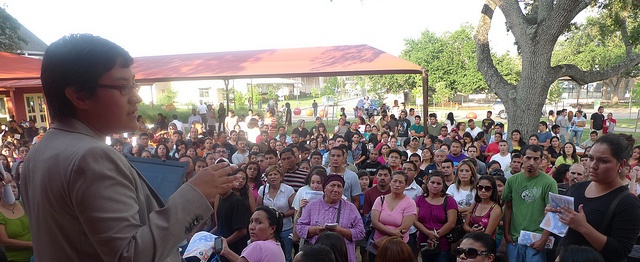 The Department of Homeland Security has issued its latest data on the Obama Administration’s initiative that offers deferment from deportation and temporary work permits to young undocumented immigrants under the Deferred Action for Childhood Arrivals (DACA) initiative. In the first six months of the program (August 15–February 14), 423,634 out of the roughly 936,933 immigrants between the ages of 15 and 30 who might immediately meet the requirements, have had their applications accepted for processing. In other words, approximately 45% of those potentially eligible for the program have applied in the first six months. In addition, since February, 199,460 individuals have been approved for DACA and will receive two-year temporary work permits.
The Department of Homeland Security has issued its latest data on the Obama Administration’s initiative that offers deferment from deportation and temporary work permits to young undocumented immigrants under the Deferred Action for Childhood Arrivals (DACA) initiative. In the first six months of the program (August 15–February 14), 423,634 out of the roughly 936,933 immigrants between the ages of 15 and 30 who might immediately meet the requirements, have had their applications accepted for processing. In other words, approximately 45% of those potentially eligible for the program have applied in the first six months. In addition, since February, 199,460 individuals have been approved for DACA and will receive two-year temporary work permits.
As the program moves forward, a range of issues have emerged in the states in which DACA recipients reside, particularly around the issuance of driver’s licenses. Once DACA recipients receive work permits, they can get Social Security cards. In most states this should make them eligible for a driver’s license if they can meet their state’s others requirements. In addition, the – the Department of Homeland Security has gone to lengths to clarify that DACA recipients are ‘lawfully present’ in order to help state’s avoid undue restrictions on DACA recipients. However, some states, like Arizona, are determined to change the rules specifically so they can deny driver’s licenses to DACA recipients. The National Immigration Law Center (NILC) keeps close track of developments on the driver’s license front and has even filed a lawsuit in Arizona to challenge their rule change.
On the national level, shortly after the DACA initiative was announced, the Obama Administration announced that these young immigrants would not be eligible for provisions of the Affordable Care Act enacted during President Obama’s first term. Before August 30, 2012, DACA-eligible individuals in theory would have been given the same access to health care and health insurance as other individuals granted deferred action. However, an August 28, 2012, announcement by the Administration changes federal rules for DACA-eligible individuals by excluding them from affordable health insurance options that are available to other individuals with deferred action. NILC also explains and tracks efforts to change this policy.
It’s likely that, in the next six months of the program, a range of challenges will arise which may impact application levels—levels which appear to already be tapering off. For example, some argue the first individuals to apply were the simplest, most straightforward cases. DACA applicants should continue to exercise discretion and only apply for the program if they meet the strict requirements, or if they have counsel that can assist and advise them on their eligibility. The American Immigration Council’s Legal Action Center continues to update and publish practice advisories that deal with many of the most difficult legal issues arising in DACA cases.
Application levels to the program may also be affected in the coming months by the perception that national immigration reform legislation is likely to offer a more permanent legalization status. So why apply for DACA when something better is just around the corner? There is also the cost factor for applying, and the trust factor of handing over one’s personal information to immigration agencies. Both are likely to impact application numbers in the coming months. As the program continues to be implemented it is important to keep track of how DACA recipients move forward in their lives with their newly gained temporary legal status, and how the government process works and responds to challenges. Paying attention to both of these areas will tell us a lot about how a more permanent legalization program will shake out for both the applicants and the government agencies implementing it.
FILED UNDER: Children, DACA, Deferred Action, Executive Branch, Healthcare, immigration reform, Students, undocumented immigration


